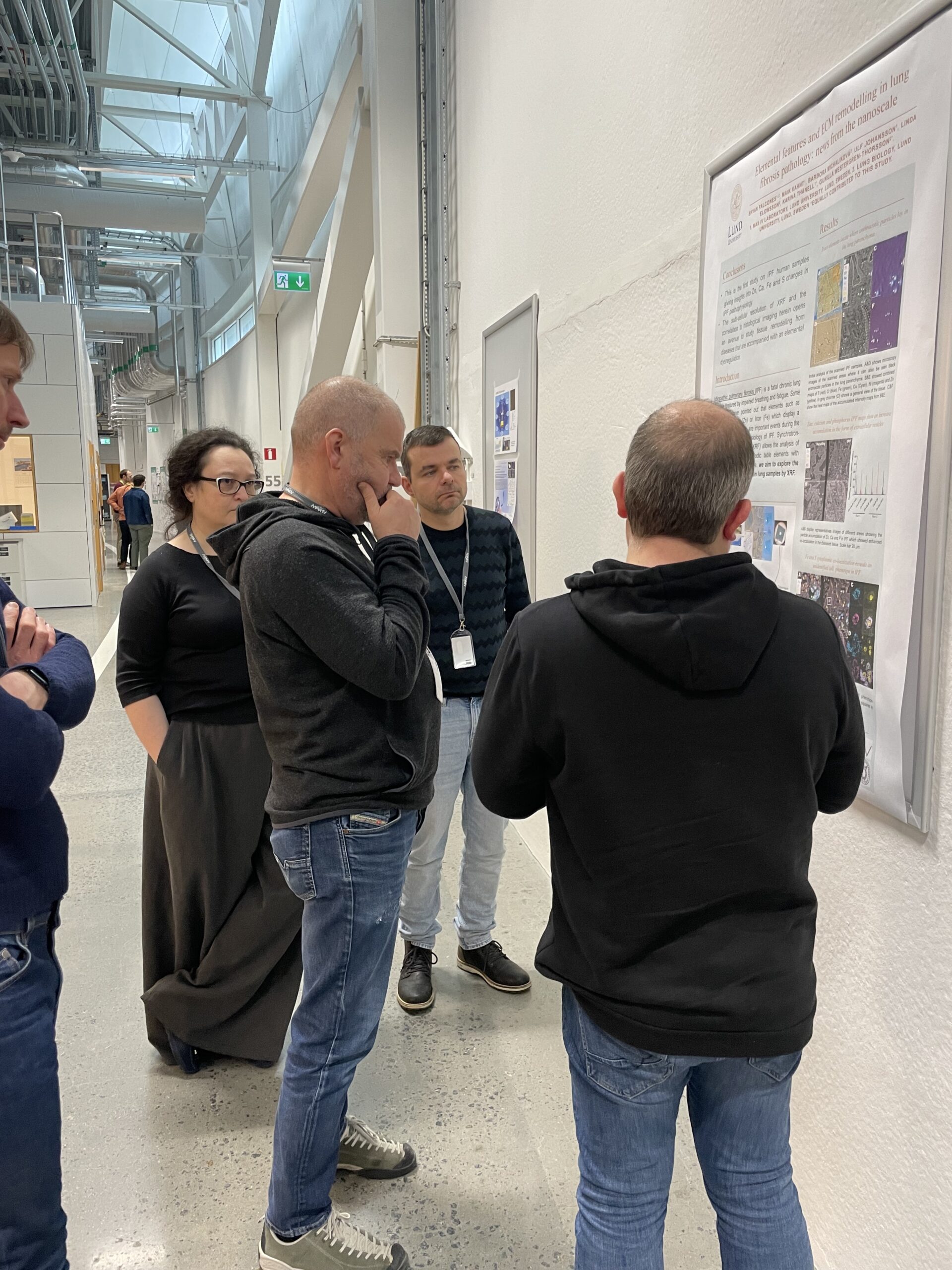InfraLife connected Environment stakeholders from SciLifeLab’s Planetary Biology capability and LINXS Environment & Climate theme with scientists at MAX IV.
One of the goals of InfraLife is to connect the three research infrastructures (SciLifeLab, ESS and MAX IV) and users to each other and learn about the complimentary use of the facilities. At the end of 2023, InfraLife held an exchange dialogue centered around the area of Environment where SciLifeLab’s Planetary Biology Capability, representatives from MAX IV and ESS along with LINXS Environment & Climate theme met and presented an overview of what they do.
In March 2024, we continued these discussions, with InfraLife hosting a tour for the representatives from SciLifeLab and LINXS and extending the discussion to beamline scientists at MAX IV. After a general tour of MAX IV, a focused tour was done to visit the beamlines and associated scientists that are involved in Environmental research.

The scientific leads and coordinator of the Planetary Biology Capability (Nathaniel Street, Stefan Bertilsson, Olga Vinnere Pettersson, Anabella Aguilera) and the core group leader for the Environment & Climate theme at LINXS (Dimitrios Floudas) had a bird’s eye view of MAX IV before going inside the ring to see the beamlines up close.
We met with Noelle Walsh of the Low-Density Matter (LDM) group who showed us the FlexPES and FinEstBeAMS beamlines, and a new project that is under development. The LDM group focuses on research on gas phase molecules, aerosols and liquids, which is useful for atmospheric studies.


Next Igor Beinik of SoftiMAX explained how spectromicroscopy and coherent imaging could be used to measure samples, such as soil, to determine their elemental composition including iron and phosphorus. He also showed us the SOPHIE end-station which supports a range of sample holders in terms of quantity and conditions.
Finally, Kajsa Sigfridsson Clauss from Balder showed us inside the experimental hutch and explained how spectroscopy can be done here at the high energy range to provide atomic characterization of components, including local structure and electronic state of samples, especially those within environmental science and geochemical research.

Tackling environmental challenges is part of the MAX IV Strategy and as all of the beamline staff highlighted during the discussions; they are there to help discuss potential experiments and assist users in many ways.
Useful links
https://www.scilifelab.se/capabilities/planetary-biology
https://www.linxs.se/environment-and-climate
https://www.maxiv.lu.se/beamlines-accelerators/science-initiatives/low-density-matter-at-max-iv/
https://www.maxiv.lu.se/beamlines-accelerators/beamlines/flexpes/
https://www.maxiv.lu.se/beamlines-accelerators/beamlines/finestbeams/
https://www.maxiv.lu.se/beamlines-accelerators/beamlines/softimax/
https://www.maxiv.lu.se/beamlines-accelerators/beamlines/balder/
